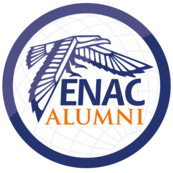News

OptiClimb, artificial intelligence application to reduce upward consumption
"Take a short break with ENAC Alumni summer issue and discover articles from our previous mag"
Would you introduce Safety Line and its "research" approach ?
Safety Line was created in 2011 based on the fact that many data recorded by aircraft (QAR data, unprotected copies of black boxes that are routinely collected for flight safety by airlines) are not exploited and the tools on the market do not let go further. From the beginning, we have approached research institutes specialized in statistical learning (Theoretical and Applied Statistics Laboratory of Paris 6) to enable these large volumes of data to be processed using appropriate algorithms. The initial idea was to be able to detect "weak signals" in these data that would make it possible to better anticipate certain risks of accidents (hard landings, runway exits, etc.). Thus, we inaugurated an innovative approach of "data mining" which allowed us to validate the relevance of this approach.
Over time, we have partnered with other mathematical research labs to expand our process to include data such as RADAR data, and provide a scientific base to learning techniques and artificial intelligence. The Safety Line research team now has 6 full-time staff, including 3 PhDs in statistics, and it also relies on researchers from several laboratories (LSTA, INRIA, IFFSTAR, LIP6, ENAC) which means that an equivalent of 15 researchers are involved in all our projects. It is an essential component of our company and it contributes a lot to the progress that we have made in this field of "data" very important in the evolution of aeronautics.
What is OptiClimb ?
OptiClimb is a world premiere that aims to reduce the consumption of aircraft in their taking-off phase. The idea came out when we realized that aircraft gone up at a constant speed, usually given by the FMS, and used standard performance models provided by the manufacturers. However, every aircraft has its own performance, which decline with time and moreover the climbing speed is fixed, the corresponding profile does not appear optimal.
Based of this observation, we have exchanged with the specialist control unit COMMANDS, which is part of both INRIA and the Ecole Polytechnique, to study the possibility to optimize the taking-off profiles. We got after about six months, encouraging results then moved on to the operational tests that were possible thanks to the involvement and confidence of Transavia France.

What are the challenges for fuel consuming and performance while taking off ?
Since it is when engines are at full speed, it is most burning fuel, especially for short and medium-distance flights. For example, a single aisle aircraft, B737 or A320 will have to use between 1000 and 1500 kg, depending on the take-off weight and the level to be reached. This represents about 20 minutes of flight but also a third of the fuel consumed throughout the flight. Reducing consumption during this phase does make sense. We can already mention two constraints that affect the consumption: because of the limit arbitrarily set at 250 kt at FL100, this induces a phase of acceleration at low altitude, which will be expensive in kerosene. In addition, the end of the climbing is at the cruise Mach, which is to accelerate the aircraft beyond its cruising speed during the climbing. The optimization of the rise makes it possible to rationalize these constraints
What is the principle of OptiClimb ? How is each aircraft characterized ?
OptiClimb is quite simple to implement for an airline. We retrieve data from the last 200 flights for each registration on the same type of aircraft. This allows you to extract aerodynamic models, thrust and individual consumption. Then these are the models that we will use to optimize each flight according to the parameters of the day (mass, level, temperature, wind profile, Cost Index). Finally, we give the pilots the instructions to follow the OptiClimb profile. This is materialized by speed and altitude values. For example, a first speed of 250 kt to FL121, then a speed of 271 kt to FL 290, followed by a Mach of 0.71 - where a standard profile would have been 250 kt to FL100, followed by 282 kt and a Mach of 0.76 which corresponds to the cruising Mach, the transition being made to the FL300. It is then enough for the pilot to enter these ground speeds in the FMS and the aircraft follows the profile without intervention through the autopilot.


The aircraft taking off is not totally free of its trajectory in the vertical plane. How can the instructions of the air control and the profile optimized by OptiClimb cohabit ? Are departures with CCO (continuous climbing after take-off to cruising altitude) more "OptiClimb" compatible than others ?
From air traffic control point of view, there are indeed some constraints. We make sure to choose the speeds so that the plane reaches the same point at the end of the climb and after the acceleration phase with or without OptiClimb. This complies with the flight plan filed. In some cases, level or speed limitations may affect the climb profile. However, in the case of Transavia, which takes off every second flight from Orly, the rate of flights where the OptiClimb profile is well followed is around 75%.
What are the gains of this solution? Is it already implemented ?
Transavia, our launch customer, was able to test the solution over a long period (which allows us to see the seasonal effects for example) and we were able to measure a savings of about 80 kg per climb. At the level of the company that operates about thirty B737-800, this allows a saving of 1.3 million euros and reduces emissions of nearly 7000 t of CO2 each year.
Does OptiClimb updated in real time determine the profile ? How is the variability of weather conditions taken into account ? What about a modification of the mass estimate ?
Each climb profile will be different and takes into account the registration, mass, cruise level and also, which is also entirely new, the wind and temperature gradient. This is made possible through our partnership with Panasonic Weather Solutions, which is a unique, continuously updated meteorological data delivery solution through surveys conducted by in-flight airliners equipped with TAMDAR probes. We can send a modified profile until the last moment, for example if there is a change of mass or flight plan. For this we use the transmission by ACARS.
Transavia is a launch customer. What about other airlines ?
OptiClimb has been tested and approved with the valuable participation of Transavia France. The advantage of OptiClimb is that it can adapt to any type of aircraft and work for all airlines. We have launched about twenty test campaigns, on different types of aircraft (A320, A330, B77, CRJ, EMB190) and on most continents. The results obtained to date show a saving that equates to about 1 kg per tonne take-off per climb, regardless to the aircraft type.
About the author

Pierre Jouniaux - CEO and Founder of Safety Line
Engineer in aeronautics (IENAC T89) and director of investigation at the BEA for 12 years, Pierre participated or led many major investigations (Concorde disaster, accident of the A300-600 of American Airlines in New York, Accident of the Air France A340 in Toronto, etc.). Successively airline pilot and security manager for Vietnam Airlines, he now has 25 years of experience in the fields of air operations and security.
Find the whole file "The ENAC, an international school" in the Mag#21 of ENAC Alumni

 2
2















No comment
Log in to post comment. Log in.